I've been using my buddy's wheel balancer the last couple years and always felt it had a couple short comings: the two little bearings used on each end of the main shaft seemed to have a little too much friction. I think the outer races perhaps rub on the angle iron they were bolted to. I also thought that the thumb screw used on those cones didn't always give a reliable clamp onto the shaft. It was hard to be sure the m/c wheel bearings were in solid contact with the balancer cones.
So I'd been thinking about building a different balancer of similar function but with a couple improvements. Here it is:
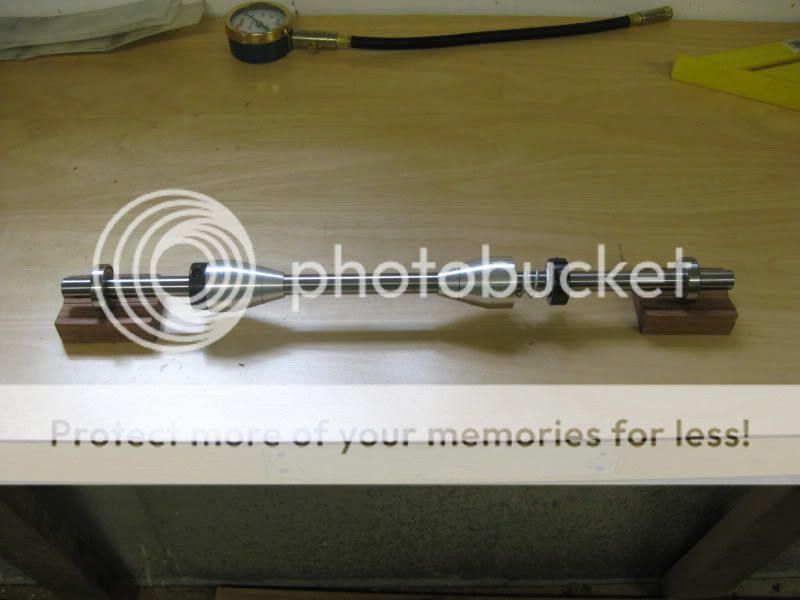
The construction is pretty simple. The shaft is hardened and ground carbon steel. The collars and bearings are off the shelf commercial grade stuff. The only custom items are the two aluminum cones that a friend made for me in his shop.
The whole thing works better than I anticipated. Hard to detect any noticeable friction in this set up.
The black collars clamp very nicely on the shaft without a chance of marring the surface. The aluminum cones have .001" clearance on the shaft and slide easily but don't wiggle around at all. The little compression spring you see keeps the cones firmly planted in the wheel bearing. Very slick, I must say. (Slicker than Bust's sheep on a Saturday night!)
Here it is in the wheel:
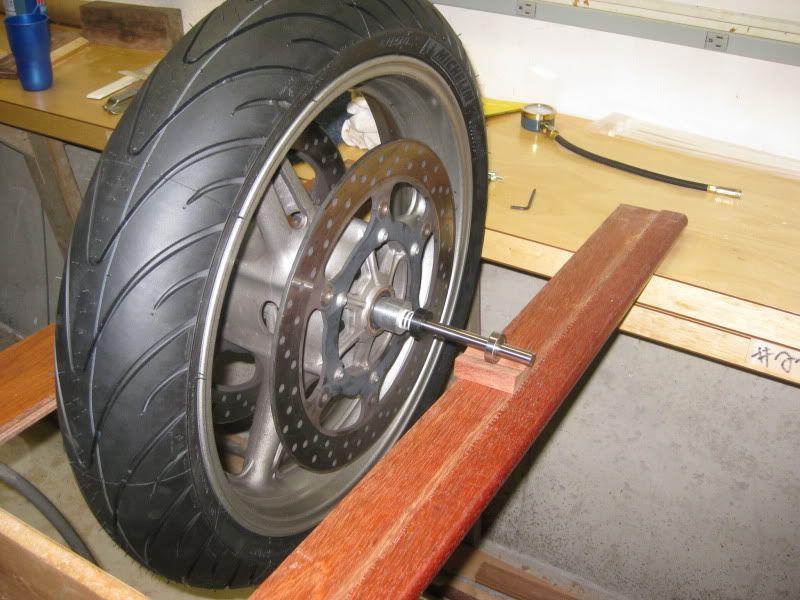
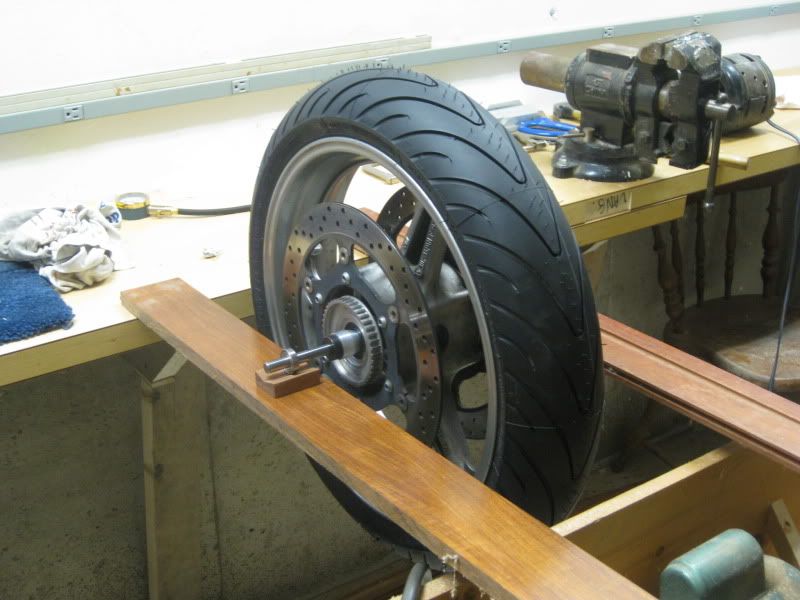
Going around:
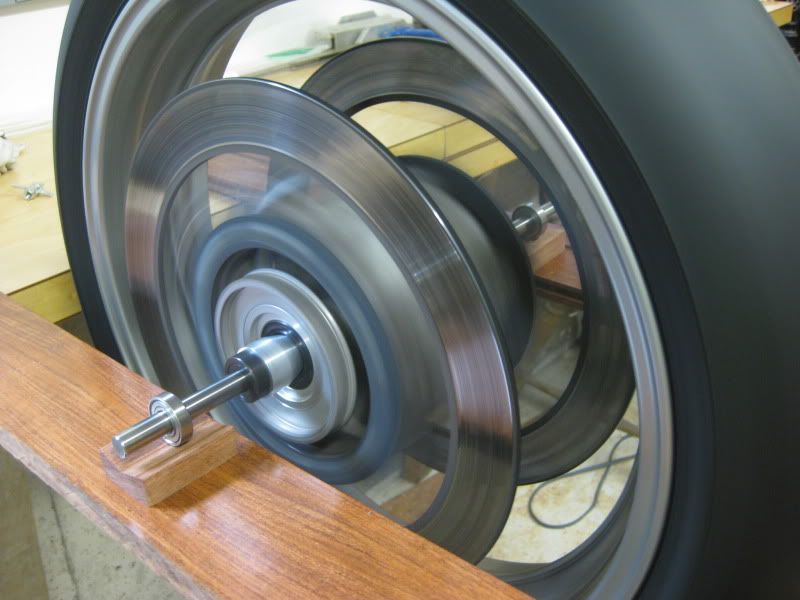
Non-marring shaft collar:
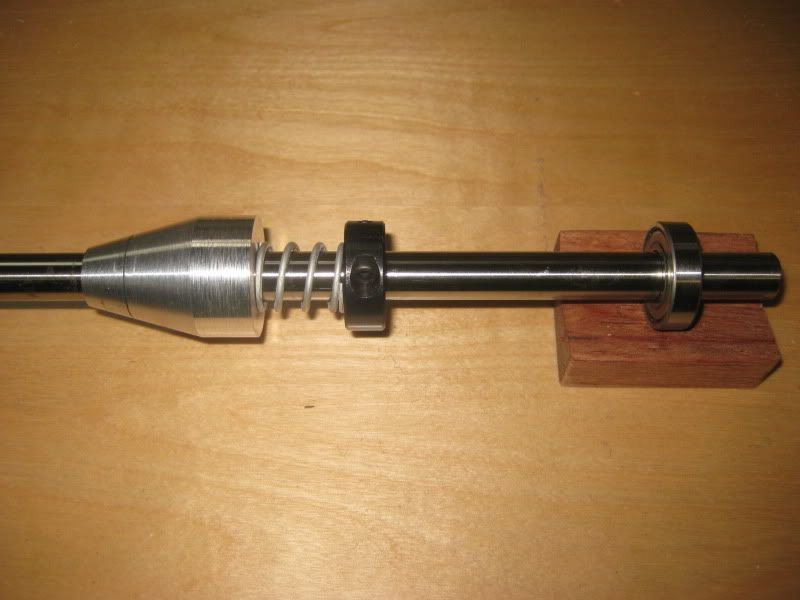
Redneck front end stand:
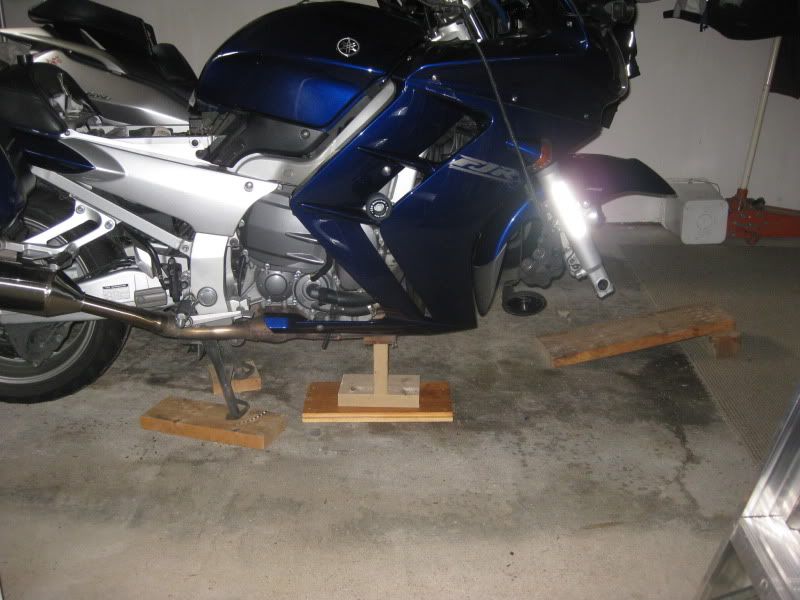
Removed front tire. Roadsmart with over 10K, believe it or not.

As far as sensitivity of the balancer goes all I can say is that I could easily detect the addition of a 1 gram weight taped to the wheel. I think this set up is so sensitive that I probably fussed too much over the degree of goodness required. I was trimming the tape on weights with side cutters in BB sized pieces to fine tune the balance.
I haven't been able to road test yet. Some hairy thunderstorms are moving through the area today. I'll report back after I hit the ton for balance feedback.
FYI. I checked the wheel balance without a tire on it. It is way out. I used a chunk of wheel weight about 25 grams to make it close. Unfortunately the PR2 doesn't have light spot indicator so I didn't bother trying to 'match' the tire to the wheel.
I have not tried this on the rear wheel yet. (maybe in a month or so when the Azaro gives up). I'll post up how it works on the rear too.
Russ
So I'd been thinking about building a different balancer of similar function but with a couple improvements. Here it is:

The construction is pretty simple. The shaft is hardened and ground carbon steel. The collars and bearings are off the shelf commercial grade stuff. The only custom items are the two aluminum cones that a friend made for me in his shop.
The whole thing works better than I anticipated. Hard to detect any noticeable friction in this set up.
The black collars clamp very nicely on the shaft without a chance of marring the surface. The aluminum cones have .001" clearance on the shaft and slide easily but don't wiggle around at all. The little compression spring you see keeps the cones firmly planted in the wheel bearing. Very slick, I must say. (Slicker than Bust's sheep on a Saturday night!)
Here it is in the wheel:


Going around:

Non-marring shaft collar:

Redneck front end stand:

Removed front tire. Roadsmart with over 10K, believe it or not.

As far as sensitivity of the balancer goes all I can say is that I could easily detect the addition of a 1 gram weight taped to the wheel. I think this set up is so sensitive that I probably fussed too much over the degree of goodness required. I was trimming the tape on weights with side cutters in BB sized pieces to fine tune the balance.
I haven't been able to road test yet. Some hairy thunderstorms are moving through the area today. I'll report back after I hit the ton for balance feedback.
FYI. I checked the wheel balance without a tire on it. It is way out. I used a chunk of wheel weight about 25 grams to make it close. Unfortunately the PR2 doesn't have light spot indicator so I didn't bother trying to 'match' the tire to the wheel.
I have not tried this on the rear wheel yet. (maybe in a month or so when the Azaro gives up). I'll post up how it works on the rear too.
Russ
Last edited by a moderator:































































